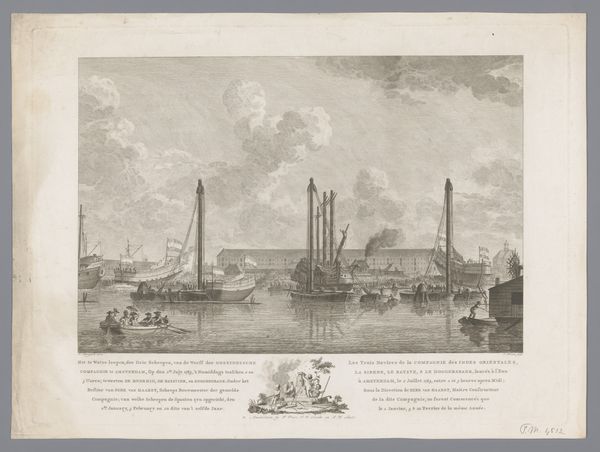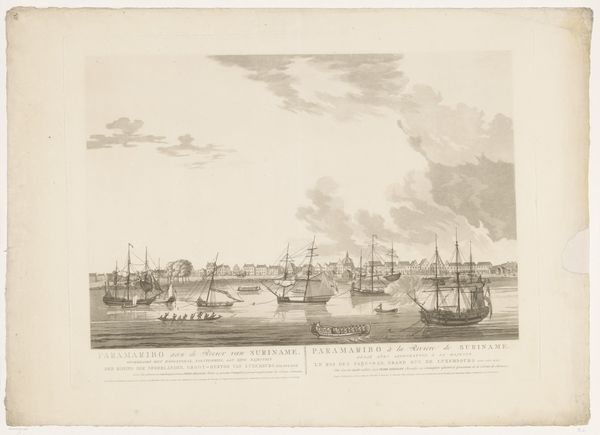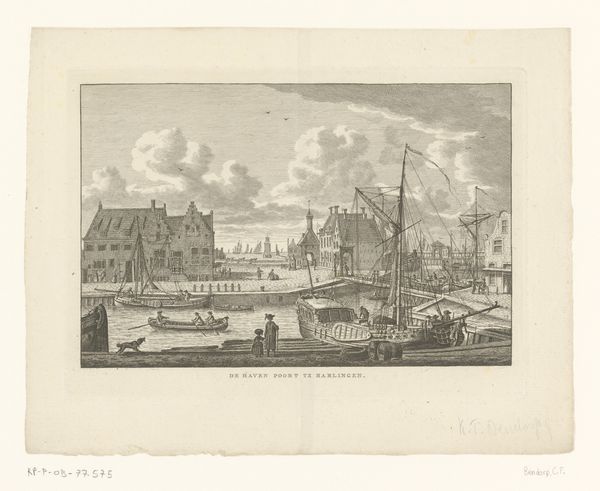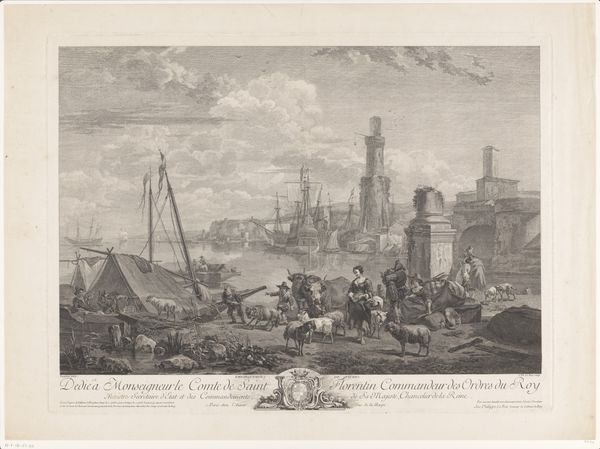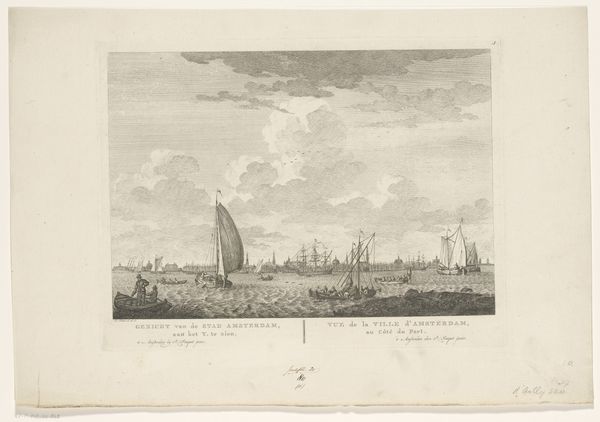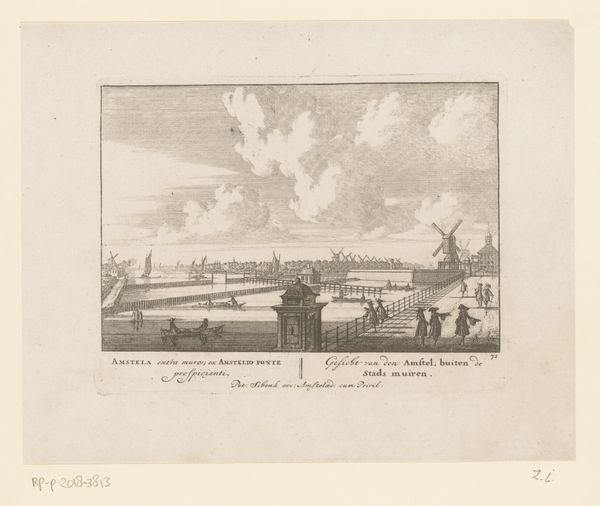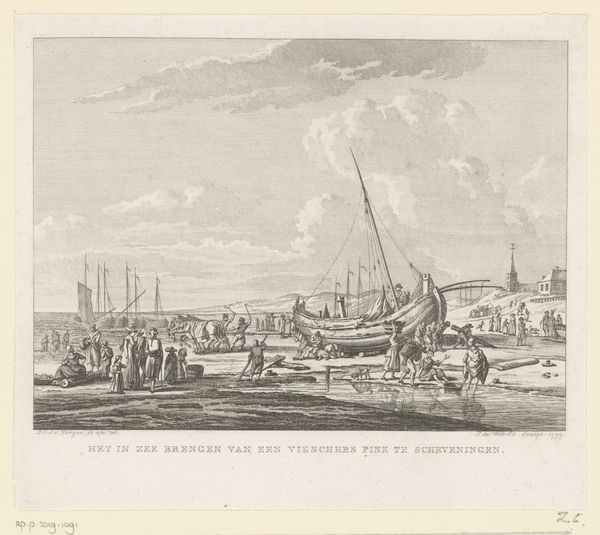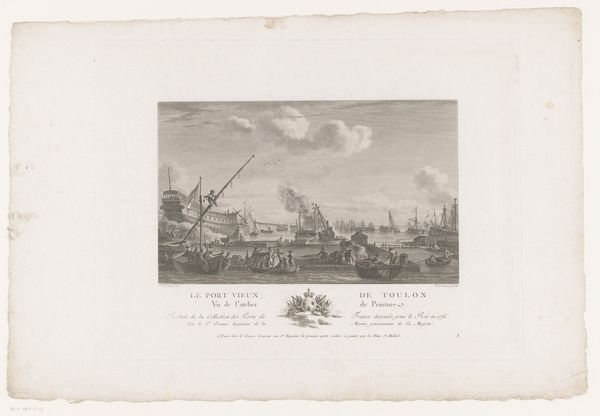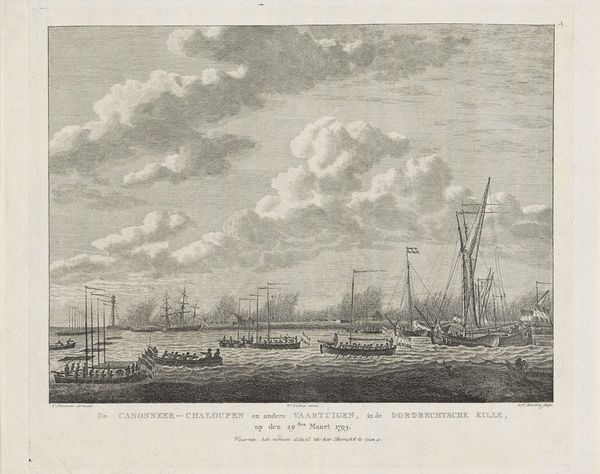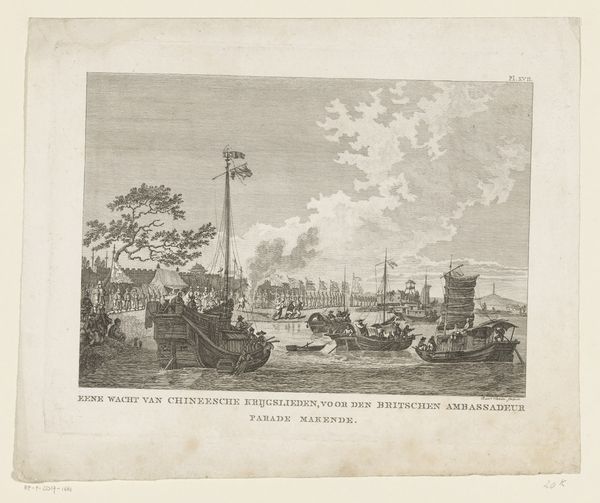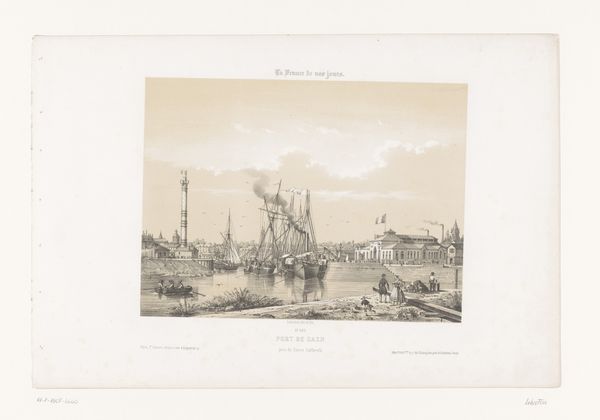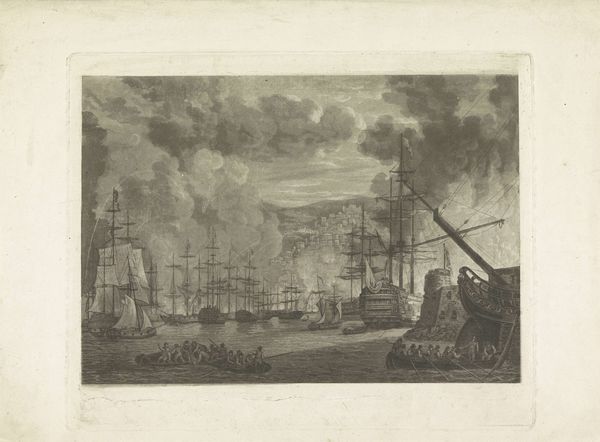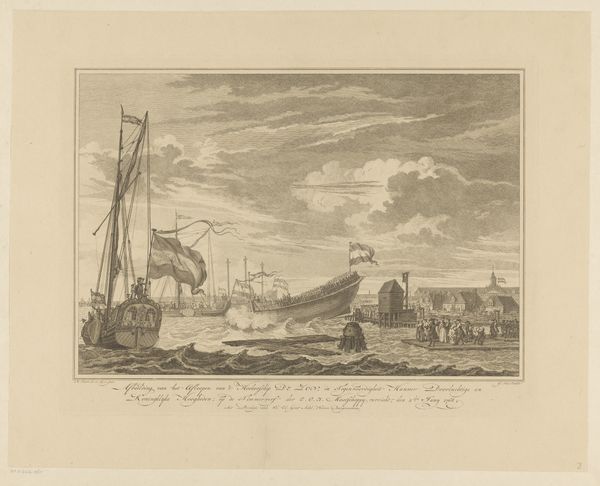
Gezicht op het Oost-Indisch Zeemagazijn en de VOC-scheepswerf op Oostenburg te Amsterdam c. 1770 - 1783
0:00
0:00
hermanuspetrusschouten
Rijksmuseum
print, engraving
#
dutch-golden-age
#
ink paper printed
# print
#
light coloured
#
old engraving style
#
line
#
cityscape
#
engraving
#
watercolor
Dimensions: height 291 mm, width 394 mm
Copyright: Rijks Museum: Open Domain
Curator: Let’s turn our attention to this print, "Gezicht op het Oost-Indisch Zeemagazijn en de VOC-scheepswerf op Oostenburg te Amsterdam," created circa 1770-1783. It’s a fascinating depiction of Amsterdam’s bustling harbor, etched by Hermanus Petrus Schouten. Editor: My initial reaction is one of somber beauty. There's a serene yet melancholic feel to this cityscape, a sense of quiet industry under a watchful sky. The light colored, monochrome print evokes the weight of history and colonial commerce, and that juxtaposition seems crucial. Curator: Absolutely. As a visual record, the print provides invaluable insight into the iconography of the Dutch Golden Age. Consider the prominent display of the Oost-Indisch Zeemagazijn, the East India Company’s warehouse. Editor: Which brings us to the less romantic implications. This seemingly tranquil harbor was, in reality, a hub of global trade built upon exploitative colonial practices. The vessels aren't merely ships; they're instruments of power and subjugation. We should consider the human cost associated with this vista, right? Curator: Undoubtedly. Ships sailing to far flung parts of the world, represented far more than mere transportation. The symbolic use of architecture creates a psychological distance, separating those within the Dutch Golden Age and those they came into contact with. Editor: Note, too, the tiny figures populating the boats. They’re dwarfed by the architecture and vessels, rendering them almost anonymous within the grand narrative of maritime trade. This seems like a intentional dehumanization and almost symbolic suppression. Curator: I find the engraver’s careful attention to the architectural details so compelling. Line by line he etches out not just the building themselves but an illusion of the period and values of the time. The line quality here shows a mastery. Editor: I would contend that this view normalizes the process by which capital accumulated, a kind of visual justification for empire building. This engraving participates in constructing a dominant narrative of wealth creation while erasing the violence required for its accumulation. Curator: A very valid perspective. It brings me back to that dichotomy in the visual symbols depicted, in essence, painting the East India Company’s warehouse and alluding to far more. Editor: Indeed. Art is rarely neutral; this scene bears the weight of complex histories.
Comments
No comments
Be the first to comment and join the conversation on the ultimate creative platform.
